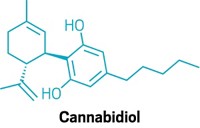Advertisement
Grab your lab coat. Let's get started
Welcome!
Welcome!
Create an account below to get 6 C&EN articles per month, receive newsletters and more - all free.
It seems this is your first time logging in online. Please enter the following information to continue.
As an ACS member you automatically get access to this site. All we need is few more details to create your reading experience.
Not you? Sign in with a different account.
Not you? Sign in with a different account.
ERROR 1
ERROR 1
ERROR 2
ERROR 2
ERROR 2
ERROR 2
ERROR 2
Password and Confirm password must match.
If you have an ACS member number, please enter it here so we can link this account to your membership. (optional)
ERROR 2
ACS values your privacy. By submitting your information, you are gaining access to C&EN and subscribing to our weekly newsletter. We use the information you provide to make your reading experience better, and we will never sell your data to third party members.
Environment
No Progress On Nitrosamine Levels In U.S. Cigarettes
ACS Meeting News: Amounts of two cancer-causing chemicals remain high in U.S. cigarettes, despite a longstanding ability to reduce them
by Laura Cassiday
September 2, 2011

For more than 30 years, scientists have known how to reduce cancer-causing chemicals called nitrosamines in cigarettes. But today’s cigarettes have similar levels of these chemicals as did cigarettes made three decades ago, according to research presented this week at a Division of Chemical Toxicology symposium at the American Chemical Society national meeting in Denver.
The processes that turn green tobacco leaves into cigarettes can convert nicotine and related alkaloids into two nitrosamines, N-nitrosonornicotine and 4-methyl-N-nitrosamino-1-(3-pyridyl)-1-butanone. These compounds aren’t the only cancer-causing chemicals in cigarettes, but strong evidence links both to cancer in smokers. Outside the U.S., many cigarette manufacturers use alternative tobacco-processing methods that produce significantly lower levels of these chemicals. In 1999, two major U.S. cigarette companies stated that they planned to reduce levels of nitrosamines in their cigarettes.
Irina Stepanov, a research associate in Stephen Hecht’s lab at the University of Minnesota, Twin Cities, wondered if the companies had kept their promise. In April 2010, she and her colleagues bought 17 brands of U.S. cigarettes, measured levels of the two nitrosamines in the tobacco and in the cigarettes’ smoke, and then compared those amounts to reports for cigarettes produced in years past.
When they averaged nitrosamine levels across the brands, the researchers found no significant difference from reported data on cigarettes made in 1979 and 1995 (Tob. Control, DOI: 10.1136/tc.2010.042192). When they looked at the eight brands introduced since 1999, just one had lower nitrosamine levels than the 1979 amounts. The researchers say that the brand’s lighter nitrosamine load is likely due to the type of tobacco plant it uses.
“Our data indicate that cigarette companies haven’t made any meaningful attempts to reduce nitrosamines in U.S. cigarettes over the past three decades, despite having the knowledge and tools to do so,” Stepanov says. She suggests that government regulation may be the only way to make cigarette companies reduce nitrosamine levels. Such regulation is possible under the Family Smoking Prevention and Tobacco Control Act, which grants the Food & Drug Administration the authority to regulate harmful substances in tobacco products.
Paul Hollenberg, a pharmacologist at the University of Michigan, Ann Arbor, says the study reminds him of the late 1970s and early 1980s, when scientists detected nitrosamines in beer. “Public pressure led to changes in brewing practices that have basically eliminated nitrosamine carcinogens from beer in the U.S.,” he says. “I certainly hope the findings presented here today will have similar effects.”





Join the conversation
Contact the reporter
Submit a Letter to the Editor for publication
Engage with us on Twitter